About the Ranking
The Chinese nation’s bright history civilization is composed by the innumerable celebrities and famous experts, so visiting their historical sites is an entrance to know China. Some ancestral temples have become the first choice of people’s trip. China has innumerable ancestral temples, among which the following ten got the greatest reputation.
-
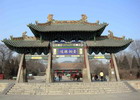
Located 25 kilometers to the southeast of downtown Taiyuan City, Jinci Temple is a combination of historical cultural relics and beautiful landscapes. The welcoming boughs of a multitude of ancient trees provide an eye-catching entrance to the temple. Beyond this, the numerous halls, cabinets, pavilions and bridges are guaranteed to keep any visitor enthralled. Jinci Temple is world-famous because it is an ancient ancestral temple, something which is rare in China.
-

Lord Bao Memorial Temple is located in Baohe Park just southwest of Kaifeng City. It was initially built in 1066 in memory of Baozheng, a famous upright officer during the Northern Song Dynasty. The temple is a typical ancient architectural complex with style imitating that of the Song Dynasty. The eastern and western halls, using some pictures and essays, show visitors many stories and tales about Lord Bao.
-
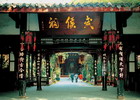
The Wuhouci Temple is located in the outskirts of Chengdu, at the edge of Nanjiao Park. There is a large temple here containing a statue of Zhu Ge Liang and an impressive Three Wonders Tablet, so called because it contains exquisite examples of calligraphy, carving and poetry. The tomb of the founder of the Shu dynasty, Liu Bei, is also here.
-
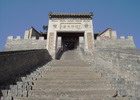
The Sima Qian Temple was built in the 4th year of Yongjia in the Western Jin Dynasty (310) and showcases, about 1,700 years of history. This temple includes four exhibition rooms, respectively displaying an exhibition of Sima Qian's life, stories, 39 inscriptions recording the repairing and enlarging process of the Temple and Sima Qian's great achievements, 53 celebrities' calligraphies and the Shi Ji.
-
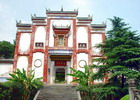
Qu Yuan's Memorial Temple on the hillside east of the town has a distinctive white gateway and walls edged in red. The original Qu Yuan Memorial Hall was built in AD 820 in the Tang Dynasty and was rebuilt several times in the course of the country's history. The present memorial hall was built in 1982, and is four times larger than the previous one. There is a statue of the poet from the Ming Dynasty (1368-1644) with many stone inscriptions.
-
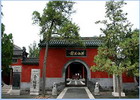
Lvxian Temple, located 10 kilometers north of Handan city, was built in the Song Dynasty. It has been carried out rehabilitation and expansion in the Ming and Qing dynasties. Covering an area of about 20 acres, it is a grand-scale, well-preserved building in Ming and Qing Dynasties and a famous monuments at home and abroad.
-

Located on the foot of Pan-holder Hill, the Hanwengong Memorial Temple was built in the Song dynasty. It’s the longest historical and well preserved temple to remember Hanyu, a famous historical scholar. During his 8 mouths in Chaozhou, he attached great importance to education, did a great job to drive away the crocodiles from the Han-River, etc. His contribution gave a deep impression to Chaozhou people.
-
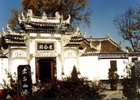
Migong Ancestral Hall was initially constructed during the Yuan Dynasty. Towards the end of Ming dynasty, it was destroyed in flames of war. The existing building was the reconstructed building from the year of Kangxi till Yong Zheng. It was built in commemoration of the outstanding calligraphy and painting master, Master Mi Fu of the country during the Northern Song Dynasty.
-

Xiancan Ancestral Temple is a classical architecture of ancestral temple style. Its fa?ade is the gate tower, upturned eaves and pendent. It is splay fairfaced brick wall by the side of it, is primitive and elegant. Passing the fence gate is a small square, was originally a gathering place of pilgrims. From ancient times, Xiaoman Opera has been performed in Xiaoman Festival, which is very bustling.
-
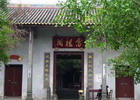
Leizu Ancestral Temple, located in Leizhou city Guangdong Province, is situated at the foot of a hill and beside a stream. The scenery is so beautiful that it is regarded as one of Leiyang Eight Scenery. The temple has glorious history. In the hole the cultural relic is extremely rich. The construction style of the main hall is unique with local characteristic.